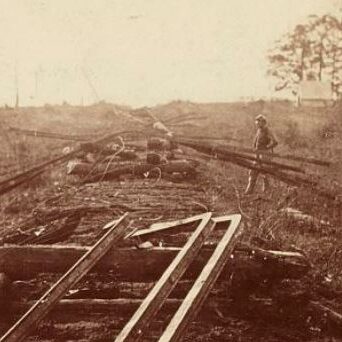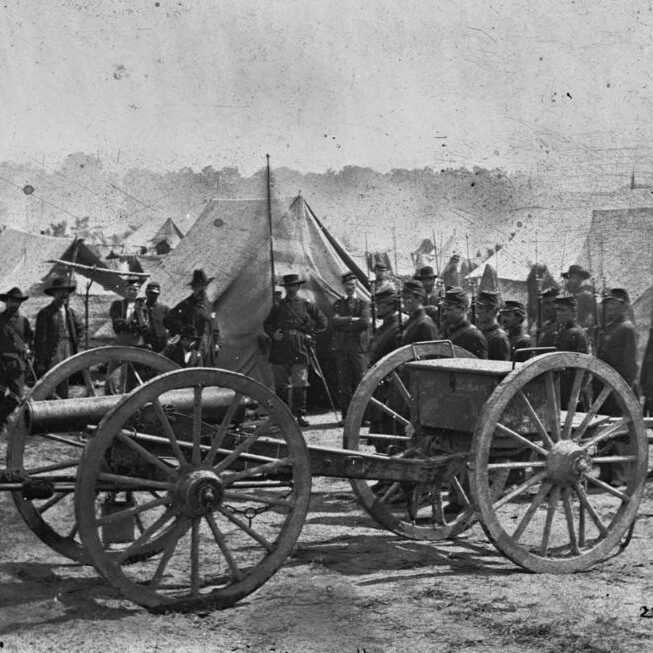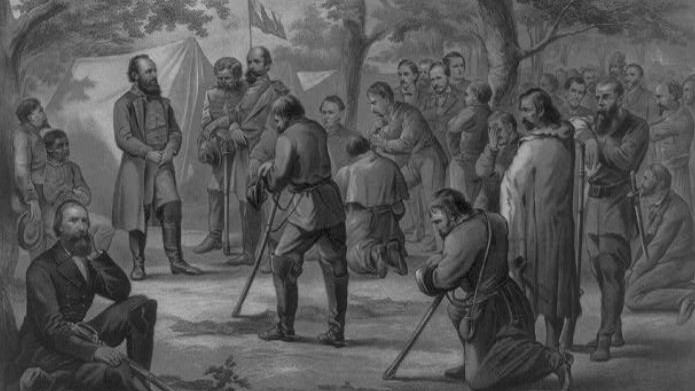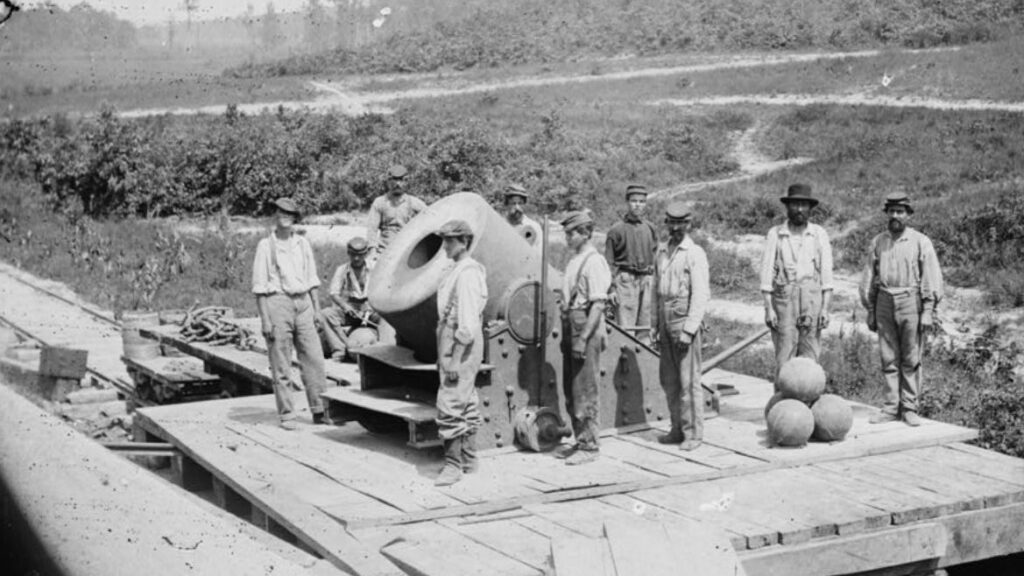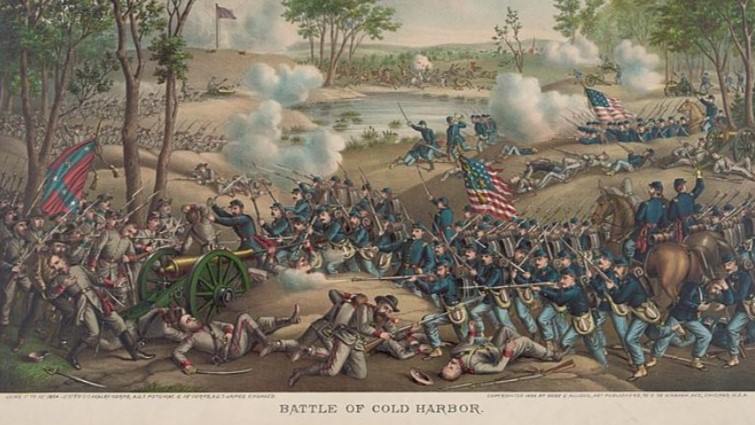The American Civil War was a key moment in history, with General William Tecumseh Sherman playing a significant role in the conflict. His infamous March to the Sea campaign raised questions about the ethics and justification of his tactics.
We will explore the context of the Civil War, Sherman’s role and beliefs, the details of the March to the Sea campaign, and arguments both for and against its justification.
Join us as we delve into the complexities of this controversial chapter in history.
- 1. The Context of the Civil War
- 2. Who Was General William Tecumseh Sherman?
- 3. What Was the March to the Sea Campaign?
- 4. Arguments for the Justification of the March to the Sea
- 5. Arguments Against the Justification of the March to the Sea
- 7. My Final Thoughts: Was General Sherman's March to the Sea Justified?
- 8. Frequently Asked Questions
- Further Reading
1. The Context of the Civil War
The Civil War, a defining moment in American history, shaped the nation’s future and identity.
The war’s impact was profound, as it led to the emancipation of enslaved people, changed the balance of power between the federal government and states, and set the stage for a Reconstruction period fraught with challenges.
What Led to the Civil War?
The Civil War was primarily fueled by deep-rooted issues such as slavery, states’ rights, and differing ideologies between the North and the South.
Slavery played a crucial role in the conflict, with the South heavily dependent on enslaved labor for its agrarian economy, while the North increasingly viewed slavery as a moral evil that contradicted the principles of freedom and equality.
The tension over states’ rights also escalated, as Southern states believed in their right to secede from the Union to protect their interests, while Northern states pushed for a strong centralized government.
The rise of abolitionist movements further polarized the nation, with activists like Frederick Douglass and Harriet Beecher Stowe advocating for the immediate end of slavery.
The secession crisis reached its peak when South Carolina declared its independence, triggering a domino effect of Southern states seceding from the Union, ultimately leading to the outbreak of the Civil War.
What Was the State of the War in 1864?
By 1864, the Civil War had escalated with significant battles and strategic maneuvers shaping the course of the conflict.
In the spring of 1864, the Union Army, under the leadership of General Ulysses S. Grant, launched a series of offensives targeting key Confederate strongholds.
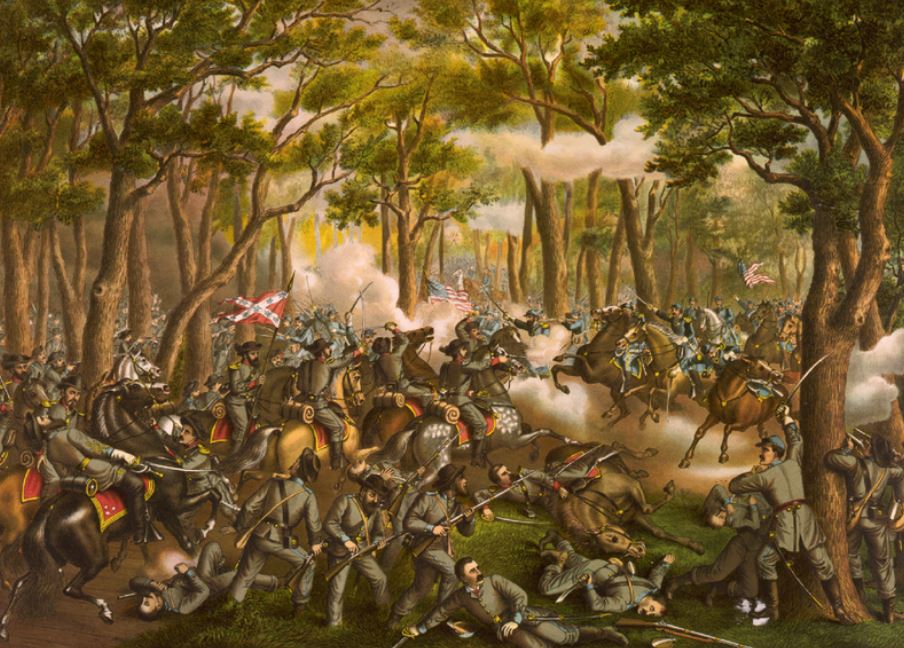
The Battle of the Wilderness, fought in May, marked a bloody clash between Grant and General Robert E. Lee’s Confederate forces. Despite heavy casualties on both sides, the battle ended inconclusively, setting the stage for further engagements.
Meanwhile, in the western theater, General William Tecumseh Sherman led his troops on a campaign through Georgia, capturing Atlanta in September 1864. This victory boosted Union morale and dealt a significant blow to the Confederate war effort.
2. Who Was General William Tecumseh Sherman?
General William Tecumseh Sherman was a prominent military leader known for his strategic brilliance and decisive actions during the American Civil War.
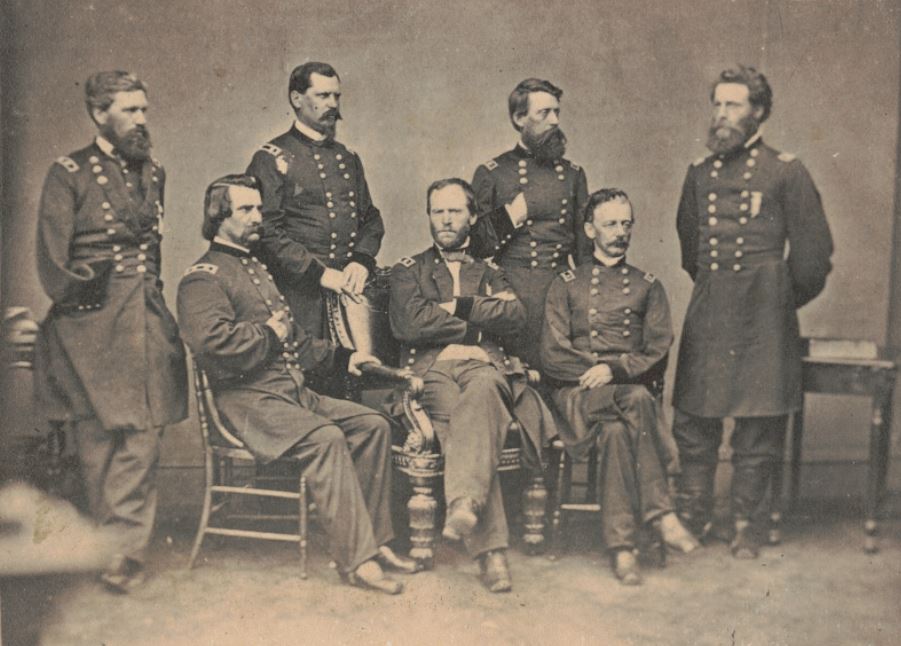
He was born in 1820 in Lancaster, Ohio, and graduated from the U.S. Military Academy at West Point in 1840. Sherman served in the Mexican-American War, showcasing his skills and leadership abilities.
What Was His Role in the Civil War? General Sherman played a crucial role in numerous military campaigns that had a profound impact on the course of the American Civil War.
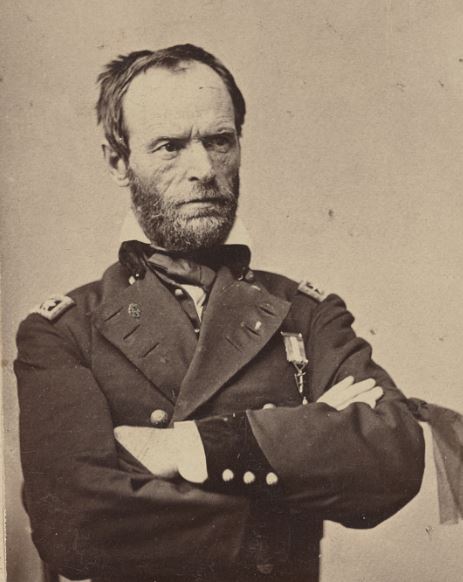
His famous March to the Sea, where his troops conducted a devastating campaign through Georgia, is considered one of the most effective military strategies in the war.
Sherman’s concept of ‘total war’ influenced warfare tactics and strategies not only during the Civil War but also in future conflicts.
This involved cutting off the Confederate army’s supply lines and conducting a devastating march through Georgia, inflicting significant damage and undermining the Confederacy’s ability to continue the war.
He targeted not just opposing armies but also civilian infrastructure to break the will of the enemy population.
Sherman’s ruthless tactics and bold strategies earned him a reputation as a formidable military leader. His success in the March to the Sea contributed greatly to the eventual Union victory in the Civil War.
3. What Was the March to the Sea Campaign?

General Sherman’s March to the Sea campaign was a pivotal military operation that left a lasting impact on the Confederate heartland.
This campaign took place from November to December 1864, comprising a Union force of around 60,000 troops.
General Sherman’s army marched through Georgia, starting in Atlanta and making their way towards Savannah.
This brutal campaign aimed to demoralize the Confederacy by destroying infrastructure and resources along the way.

The soldiers covered approximately 300 miles from Atlanta to Savannah, practicing a strategy of total warfare. Along the way, towns like Milledgeville and Louisville were captured and destroyed.
One significant event during the march was the crossing of Ebenezer Creek, where fleeing slaves were tragically left to drown.
The Savannah campaign marked the conclusion of the march, with the city’s capture on December 21, 1864.
The campaign was a strategic move that further weakened the Confederate forces and shortened the war.
How many people died in Sherman’s march?
The exact number of casualties in Sherman’s March to the Sea remains a topic of historical debate, encompassing both military targets and civilian populations.
The campaign was marked by a high death toll, with estimates suggesting that tens of thousands lost their lives during the march. An estimated 3,500 people dies on both sides.
The Union army’s deliberate strategy of destroying resources and infrastructure had devastating consequences on civilians caught in the path, resulting in numerous unrecorded deaths due to hunger, disease, and violence.
Confederate forces and sympathizers also suffered significant losses, adding to the overall toll of the brutal campaign.
It was not possible to accurately count the casualties, reflecting the complexity and brutality of this campaign.
How many slaves followed Sherman’s March to the Sea?
The march witnessed an estimated 10,000 liberated slaves follow Sherman’s army. These slaves were seeking freedom and refuge from their former oppressors.
These emancipated individuals, daring to pursue their freedom amidst the chaos of war, faced numerous challenges along the way.
Struggling with scarce resources, discrimination, and the constant threat of being captured by Confederate patrols, they displayed immense courage.
Their presence not only symbolized the profound desire for liberty among the enslaved population but also added a poignant layer to the historical significance of Sherman’s campaign.
Despite being liberated, many slaves would die of hunger, disease, or exposure along the way.
What Were the Immediate Consequences of the Campaign?
The immediate aftermath of Sherman’s campaign witnessed widespread devastation in the South, marking a significant Union victory but leaving a trail of destruction in its wake.
The impact on the Southern regions was profound, with many civilians facing displacement, shortages of essential supplies, and loss of livelihoods.
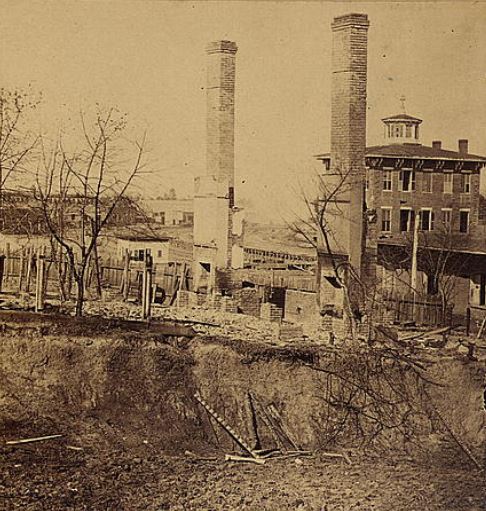
Cities like Atlanta and Columbia were left in ruins, symbolizing the cost of war on civilian populations.
Despite the devastation, Sherman’s March to the Sea effectively broke the back of the Confederacy. The campaign’s success played a crucial role in hastening the end of the Civil War and securing a Union victory.
What was the strategic significance of Sherman’s March to the Sea campaign?
Sherman’s March to the Sea held immense strategic significance, disrupting Confederate supply lines and resources while embodying the concept of total war.
The campaign was a deliberate effort to undermine the Confederate war effort by targeting its infrastructure and economy.
By cutting through Georgia with destructive efficiency, Sherman’s army effectively crippled the South’s ability to sustain its forces, compelling Confederate leaders to divert precious resources to address the devastation left in Sherman’s wake.
Sherman’s own estimation put the damage at $100 million. This included the destruction of vital infrastructure, supplies, and the tools of production (like cotton gins). The Union army destroyed miles of railroads and bridges, severely hampering Confederacy’s ability to transport goods and troops.
Sherman’s forces captured livestock, food, and fodder. These supplies were crucial for the Union and denied these resources to the Confederacy.
The devastating impact of the march reverberated beyond its immediate military implications, as it highlighted the shift towards a more ruthless, all-encompassing approach to warfare known as total war.
4. Arguments for the Justification of the March to the Sea
Several arguments support the justification of Sherman’s March to the Sea, citing military necessity, weakening the Confederate Army, and the strategic destruction of vital resources.
Sherman’s deliberate targeting of resources such as railroads, farms, and factories had a profound impact on the Confederate war effort, hampering their ability to sustain themselves economically and militarily. This strategic approach not only dealt a severe blow to the enemy but also showcased the effectiveness of total warfare tactics in disrupting the adversary’s infrastructure.
Military Necessity
The concept of military necessity during the Civil War justified Sherman’s actions as critical for securing strategic advantages and achieving military objectives.
Despite facing criticism for his harsh tactics, Sherman firmly believed that the end justified the means when it came to military necessity. By implementing scorched earth policies, he aimed to cripple the Confederacy’s infrastructure and diminish their capacity to wage war.
The notion of military necessity encouraged Sherman to prioritize expedience and effectiveness over conventional rules of engagement.
Weakening the Confederate Army
Sherman’s campaign aimed at weakening the Confederate Army by disrupting supply chains, reducing morale, and fracturing the enemy’s military strength.
In his bold and calculated move, Sherman recognized that controlling communication and trade routes was key to crippling the Confederate forces.
By severing vital supply lines and creating chaos behind enemy lines, he effectively forced the Confederates into a defensive stance, depleting their resources and breaking their morale.
Sherman employed his troops in a manner that maximized damage to important infrastructure, such as railroads and bridges, further hindering the Confederacy’s ability to support its troops and conduct operations effectively.
Psychological Warfare
Psychological warfare tactics in Sherman’s campaign instilled fear, disrupted morale, and exerted psychological pressure on Confederate forces.
This form of warfare focused on manipulating the enemy’s emotions and mental state, rather than solely relying on physical force.
By targeting civilian populations and the systematic plundering of resources, Sherman implemented strategies aimed at weakening the resolve of the opposing side.
Intimidation was a key element, meant to induce panic and uncertainty, causing the enemy to question their ability to resist.
The calculated use of fear tactics aimed to sow discord among Confederate ranks, creating doubt and paranoia and desertion.
The psychological toll of constant harassment and the loss of control over their territory added to the overall sense of defeat among the Southern troops.
Ending the War Quickly
A key argument for the March to the Sea’s justification lies in the intent to end the war swiftly by achieving decisive victories and forcing the Confederacy to surrender.
By implementing a total war strategy, Sherman aimed to strike at the heart of the Confederacy and cripple their ability to resist, ultimately pressuring them to capitulate.
5. Arguments Against the Justification of the March to the Sea
Conversely, voices against the justification of Sherman’s March to the Sea highlight concerns about targeting civilians, violating the rules of war, and the extent of excessive destruction inflicted.
One of the primary criticisms of Sherman’s aggressive tactics was the intentional targeting of innocent civilians instead of focusing solely on military objectives. Critics argue that such actions deviated from the established rules of war, which aimed to protect non-combatants in conflicts.
The scale of destruction wrought by Sherman’s campaign also raised eyebrows, with many questioning whether the extent of the damage was truly necessary to achieve military objectives.
Historians debate whether the devastation caused by the march was proportionate to its strategic goals or if it crossed ethical boundaries.
Targeting Civilians
The controversy surrounding Sherman’s campaign centers on the ethical dilemma of civilian casualties, raising questions about the morality of targeting non-combatants.
During Sherman’s March to the Sea, the deliberate targeting of civilian populations revealed a stark reality of warfare, where innocents bore the brunt of conflict’s brutality.
Historically, the justification for such actions often pivoted around the concept of total war, advocating for the destruction of infrastructure and resources that supported the enemy’s military capabilities.
This strategic objective clashed directly with the moral obligations of minimizing harm to non-combatants, sparking debates on the permissible limits of warfare ethics.
Violating the Rules of War
Critics argue that Sherman’s actions bordered on war crimes by allegedly violating established rules of war and disregarding humanitarian principles outlined in international conventions.
Sherman’s tactics intentionally targeted civilian infrastructure, farms, and resources, meant to demoralize the Southern population and cripple their ability to support the war effort. This deliberate destruction could be seen as violating the customs of war that existed even before the Geneva Conventions.
While less organized than the atrocities of some other wars, there are accounts of looting, pillaging, and violence against civilians by some Union troops during the March. This type of behavior violates principles of humane conduct during war.
Excessive Destruction
Concerns over excessive destruction in Sherman’s wake revolve around the widespread devastation of properties, infrastructure, and resources far beyond military necessity.
Civilian assets, such as homes, farms, and businesses, bore the brunt of the violence, resulting in extensive loss and displacement for many innocent civilians.
Towns and cities were reduced to rubble, with historical landmarks and cultural heritage sites decimated without regard for their significance.
The destruction of crops and livestock further exacerbated the suffering of the civilian population, leading to widespread hunger and economic turmoil.
Impact on Southern Economy and Society
Sherman’s campaign had lasting repercussions on the Southern economy and society, leading to significant post-war challenges and economic upheaval.
The devastating impact of Sherman’s March to the Sea reverberated throughout the Southern states, disrupting not only the economy but also tearing apart societal structures that had been deeply rooted for generations.
The widespread destruction left the region in a state of chaos, with many facing dire circumstances. The once prosperous plantations lay in ruins, and the labor system that had sustained the plantation economy was severely disrupted.
The challenges that arose in the aftermath of the conflict were monumental.
The Confederate defeat and the devastation brought by Sherman’s forces left the South grappling with widespread poverty, food shortages, and a lack of resources. The region faced the daunting task of rebuilding not only its physical infrastructure but also its social fabric.
7. My Final Thoughts: Was General Sherman’s March to the Sea Justified?
In evaluating General Sherman’s March to the Sea, the debate over its justification continues to spark discussions, considering both the immediate consequences and the long-term impact on history.
Many argue that Sherman’s ruthless tactics influenced the outcome of the Civil War, hastening the Confederacy’s defeat. Others condemn the campaign for its brutality towards civilians and infrastructure.
However, the destructive nature of the march left a lasting scar on the South.
The long-term consequences of Sherman’s campaign reverberated through the Reconstruction era, reshaping the Southern economy, society, and political landscape for years to come.
The campaign’s brutality and devastation have been central to discussions about the moral implications of warfare and the treatment of civilians during conflicts.
8. Frequently Asked Questions
Was General Sherman’s March to the Sea justified?
Many historians argue that General Sherman’s March to the Sea was a necessary military strategy to bring an end to the Civil War.
What was General Sherman’s March to the Sea?
General William Tecumseh Sherman led a Union campaign during the Civil War in which his troops marched from Atlanta, Georgia to Savannah, Georgia, destroying and seizing Confederate resources along the way.
Why did General Sherman choose to march to the sea?
Sherman believed that by targeting civilian resources and infrastructure, he could weaken the Confederacy’s ability to fight and ultimately bring a quicker end to the war.
Did General Sherman’s March to the Sea achieve its intended purpose?
Yes, Sherman’s tactics proved successful in weakening the Confederacy and ultimately helped lead to their surrender in 1865.
Were there any negative consequences of General Sherman’s March to the Sea?
Some argue that the destruction caused by the march had a lasting impact on Southern civilians, as well as the economy and infrastructure of the region for years to come.
How is General Sherman’s March to the Sea viewed today?
General Sherman’s tactics have been a subject of debate and criticism, but many historians still view the campaign as a necessary and effective strategy in bringing an end to the Civil War.
Further Reading
If you enjoyed this article, you may be interested to read more about the American Civil War events, or perhaps read about the South’s important victories. Read here for more general American history.

